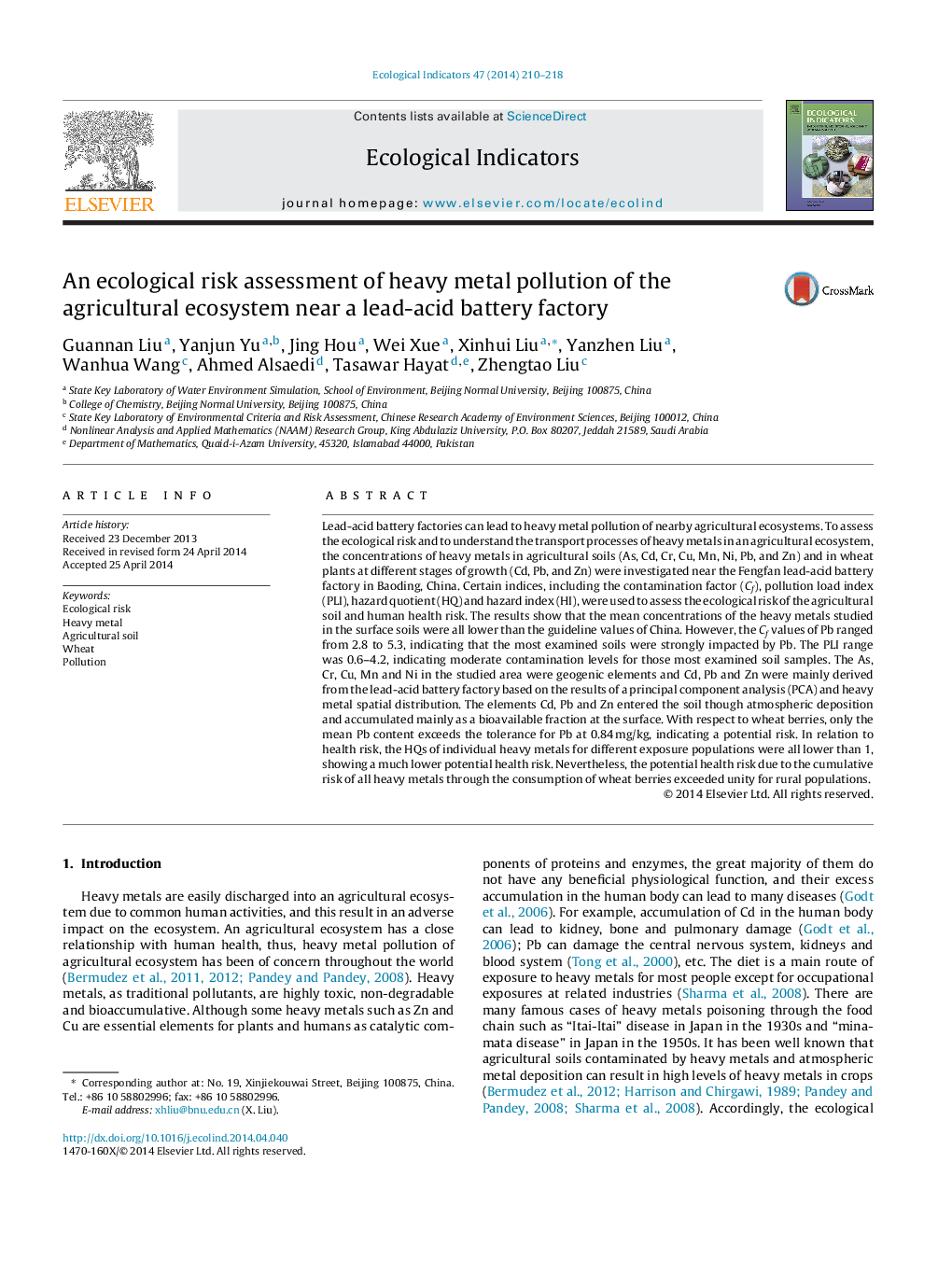| کد مقاله | کد نشریه | سال انتشار | مقاله انگلیسی | نسخه تمام متن |
|---|---|---|---|---|
| 4373031 | 1617154 | 2014 | 9 صفحه PDF | دانلود رایگان |
Lead-acid battery factories can lead to heavy metal pollution of nearby agricultural ecosystems. To assess the ecological risk and to understand the transport processes of heavy metals in an agricultural ecosystem, the concentrations of heavy metals in agricultural soils (As, Cd, Cr, Cu, Mn, Ni, Pb, and Zn) and in wheat plants at different stages of growth (Cd, Pb, and Zn) were investigated near the Fengfan lead-acid battery factory in Baoding, China. Certain indices, including the contamination factor (Cf), pollution load index (PLI), hazard quotient (HQ) and hazard index (HI), were used to assess the ecological risk of the agricultural soil and human health risk. The results show that the mean concentrations of the heavy metals studied in the surface soils were all lower than the guideline values of China. However, the Cf values of Pb ranged from 2.8 to 5.3, indicating that the most examined soils were strongly impacted by Pb. The PLI range was 0.6–4.2, indicating moderate contamination levels for those most examined soil samples. The As, Cr, Cu, Mn and Ni in the studied area were geogenic elements and Cd, Pb and Zn were mainly derived from the lead-acid battery factory based on the results of a principal component analysis (PCA) and heavy metal spatial distribution. The elements Cd, Pb and Zn entered the soil though atmospheric deposition and accumulated mainly as a bioavailable fraction at the surface. With respect to wheat berries, only the mean Pb content exceeds the tolerance for Pb at 0.84 mg/kg, indicating a potential risk. In relation to health risk, the HQs of individual heavy metals for different exposure populations were all lower than 1, showing a much lower potential health risk. Nevertheless, the potential health risk due to the cumulative risk of all heavy metals through the consumption of wheat berries exceeded unity for rural populations.
Journal: Ecological Indicators - Volume 47, December 2014, Pages 210–218
